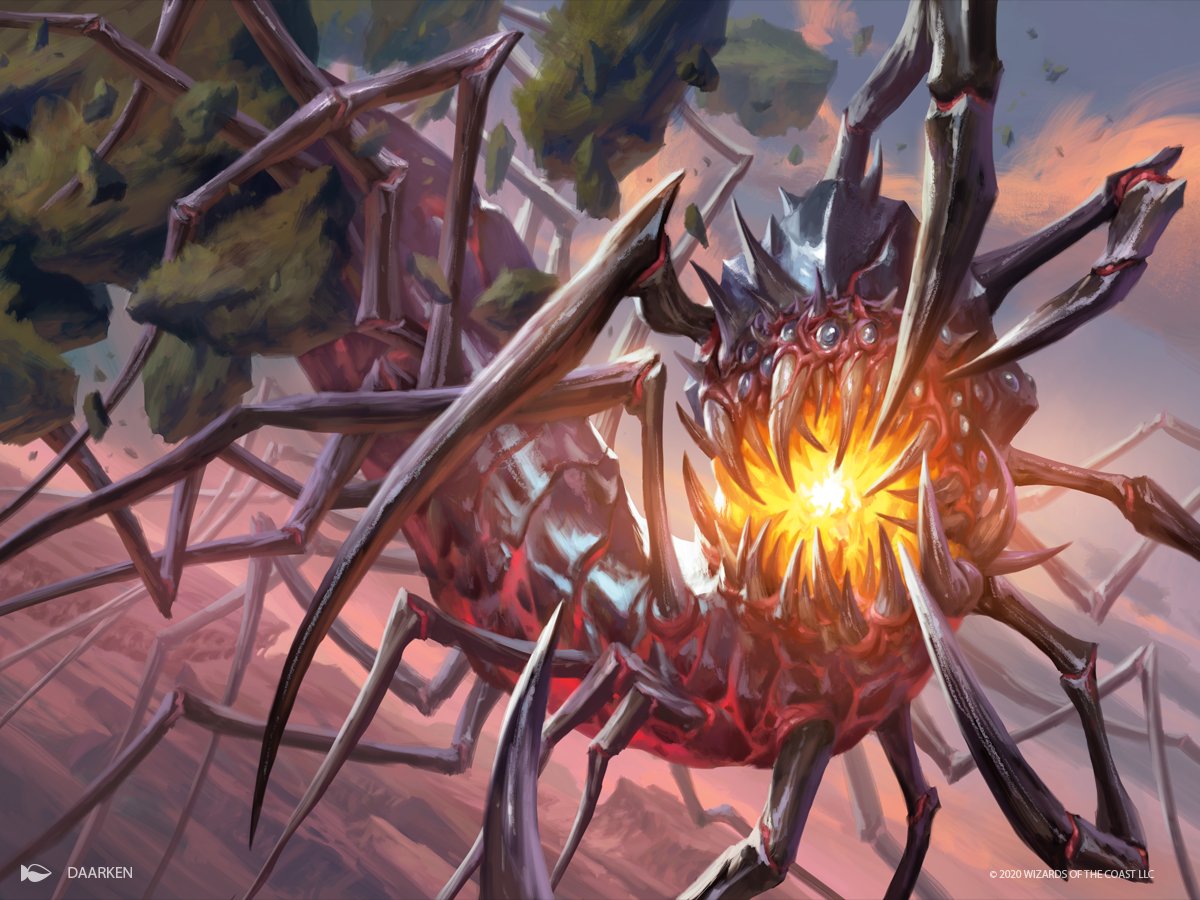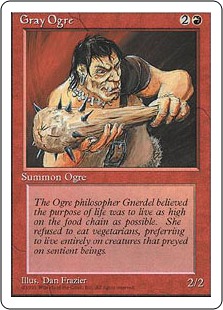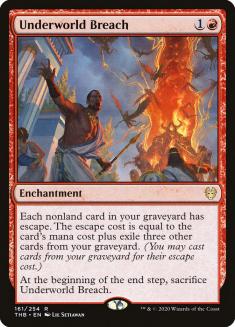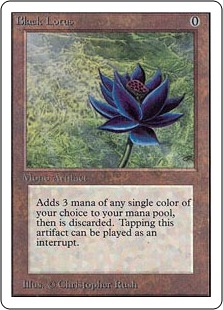..and I mean that conservatively. I think it’s probably worse than that.
Sometimes new cards or mechanics come around that fundamentally change the game quite a bit more than others. The introduction of planeswalkers was the biggest, but “this card will have a lasting and unique impact on eternal formats” isn’t necessarily a unique criticism. I do definitely believe that description applies to companions in a way that is similar to how it applies to cards that break the color pie, where they become the only way to accomplish a thing in a color and stick around as a result.
It’s hard to take the full scope of the impact of companions into account before we know what all of them are, so I’m going to focus on big-picture implications of this kind of design, using the ones we’ve seen to highlight possible impacts if Lurrus of the Dream-Den is not uniquely powerful.
At its heart, companion is a tribute to Commander. Commander is overwhelmingly popular; I think it’s hard to know for sure, but I’ve heard it suggested that it’s the most popular way to play Magic. Given that, one could expect that making constructed Magic more like Commander would be a good thing. I’d like to argue otherwise.
So why is it different?
First, Commander is explicitly a social format held together by various unwritten social contracts. Commander is Magic’s take on a role-playing game. Everyone chooses a commander as their character and their deck is that character’s “signature spellbook.” Many commander players, myself included when I’ve played, choose cards that best fit their deck’s theme or mechanic that play well with that commander, rather than necessarily choosing the cards that are merely most likely to win games.
The commander adds to the experience by offering direction in deckbuilding in a casual setting, which is important because otherwise, how can a player make any decisions about what cards to play? You need a goal. In competitive Magic, that goal is to build a winning deck, but if you want players to build decks that don’t just try to win, you need to offer something to replace that, which Commander is uniquely good at providing, which is why it’s been so successful as a casual format.
When you combine this “signature spellbook” idea with the fact that there are almost a thousand possible commanders, you end up with a rich canvas for self expression and innovative deckbuilding. Players build decks to show off their takes on how to best express the characters as they see them, and the decks become artistic expressions of characters’ personalities, at least in some cases.
Commander is a successful format because the commanders serve an important purpose in their context. In competitive Magic, we don’t need this kind of guidance. The goal will always be to win. So what’s the advantage of printing cards that function similarly, like companions? This is like adding ice cream to your Chipotle burrito. You like ice cream, so it can only help, right?
Well, no. It depends on context.
Okay, so, if you’re with me that commanders are useful for providing direction in casual deckbuilding and that that isn’t relevant to add to tournament deckbuilding, you might understand why I think they don’t add as much here, in a Standard-legal expansion, but that still doesn’t demonstrate an actual problem, right? No, not by itself. To make that case we have to look at the impact these cards have.
First, balance. Every game, if you have a companion, you start with an eight-card hand. That’s pretty strong, but one of the cards isn’t a normal card in your deck; it’s this specific companion. If the companions were Gray Ogres that you had to build your deck in a certain way to get access to, that would probably be weaker than just drawing eight cards. However, these cards seem to be roughly statted as normal cards, not especially weak cards. You don’t just have an eight-card hand in your Lurrus deck; you have seven cards and a Lurrus.
This means that you can build your deck around the fact that you always have Lurrus. You can play a few extra lands because you know your extra card is a spell. You can play Mishra’s Bauble because you know that if you get it into your graveyard before the third turn, it’ll always draw you an extra card when you play Lurrus. You can avoid playing any other three-drops because you know you’ll always have something to cast for three mana (yes, the joke is that you have to do that, except you don’t actually because Lurrus only cares about permanents in your deck).
What I’m saying is that with Lurrus, and maybe others, the payoff is actually somewhere above “if you meet this condition, draw an extra card at the beginning of the game.” If any of the conditions are relatively cheap to meet, not having a companion puts you at a significant disadvantage relative to having one. If everyone has one, that’s not necessarily a balance issue, but it does lead to some other issues.
First, if we imagine that maybe three or four companions end up being the best ones, and they’re all fairly restrictive, it severely limits the number of playable decks; if they are so strong, you have to find a way to play one of them. This could soft-ban every card that doesn’t meet the conditions of any of the strong companions.
For many players, Commander is more fun to build decks for than it is to actually play. Finding all the neat cards that support your weird goals can be a fun challenge. These cards look to bring similar deckbuilding inspiration to competitive Constructed formats, except, again, these formats don’t need this. Instead, they just create restrictions that lead, I suspect, to more easily “solving” deckbuilding. As someone who tries to generate a lot of decklists to provide content to readers, I appreciate how easy these make building decks by providing clear direction. My concern is that after the initial wave of new ideas, things will get old quickly as the things each of them do become solved and stale.
Next up, there’s the actual gameplay. It’s not just that always having access to the same card means you can build your deck around that card. It also means that every game you play is going to involve casting Lurrus. I suspect that’s going to get old in a hurry. Like, if you have Mishra’s Bauble, Lurrus compares very favorably to Rogue Refiner; it’s a 3/2 cantrip for three, except it has lifelink and also does something probably better than drawing a card every turn it’s on the battlefield and this is a free card you added to your hand. There’s no, “I hope my opponent doesn’t have it this game” (though I guess you can hope they don’t have the Bauble to go with it).
Another issue with these cards is when they show up as unwelcome guests. What I mean is, on their face, these cards ask you to jump through some hoops to play them, but, as it happens, some decks naturally jump through some of these hoops by accident. At least with Lurrus, several decks in eternal formats naturally meet this requirement (Storm in Legacy, Burn in Modern, and Ken Yukohiro’s Sram Auras in Pioneer all come to mind, for example).
You may have heard that Lutri, the Spellchaser has been preemptively banned in Commander. It was banned because every Izzet deck would be strictly better if the player owned a Lutri in addition to the rest of their deck, so players would basically be compelled to have this thing. The same is true of Lurrus in Modern Burn, for example. Yes, technically you have to give up a sideboard slot to get this card. I honestly can’t really believe that people really think this “tradeoff” is a question. Would you give up 6.66% of your sideboard for an eight-card hand? How is this even a question? If there’s a companion you can play without going out of your way and you’re not playing a companion, you should include that in your sideboard, regardless of how bad it is.
That fact combines really poorly with this mechanic’s push toward repetitive gameplay, because for eternal formats this is just how the game is now and forever unless all playable companions are eventually banned. That means Lurrus is going to get cast a lot.
Aside from repetitiveness, now whenever building a deck for an eternal format, you’ll need to cross-reference the ten companions to see if you could get any of them for free or at a low cost, even if you aren’t trying to build around them.
I’ve heard it suggested that the sentiment at Wizards of the Coast (WotC) has been that they should balance cards for Standard and not worry much about older formats, because if something breaks through, it just generates interest for a while, and if it has to be banned eventually, that can happen. This philosophy is how we get cards like Underworld Breach. Companions are similar. The greatest amount of consideration I can imagine having been given to the interaction between Lurrus and Black Lotus in Vintage is roughly, “oh, that sounds pretty cool.”
I think this philosophy disrespects the history of the game to maximize short-term sales. I think it’s good when new sets offer cards for old formats or shake things up a bit, but careless fundamental disruptions to formats players have enjoyed for decades are needlessly reckless. If I were a Vintage player and found out that everything now revolves around this card that breaks the rules in a radically new way, I could see being substantially put off by that.
And for what gain? What’s the best that can come from these cards? The best case scenario is that they’re fringe-playable or don’t show up much, right? I mean, that seems like it’s the case to me, since the repetitive play pattern mostly seems negative. Except, by looking at decks like Burn, it seems pretty clear that these basically can’t just miss, right? When the “deckbuilding cost” is a sideboard slot, rather than building your deck around a restriction, they just have to show up.
But let’s imagine a world where they printed lower payoffs or harder restrictions. What are we hoping for, then?
That they mostly miss Constructed, right? As far as I can imagine, it seems like the goal here was either just a nod to Commander or to try to capitalize on its success with a similar mechanic, but, as mentioned, I don’t think that’s a good strategy here.
After writing the first draft of this article, I became aware that Dave Humpherys wrote about WotC’s goals and considerations for companion (among other things). The goal was actually to explore the design space of offering rewards for deckbuilding restrictions, which is potentially a cool trade-off, and having the cards revealed at the beginning of the game is a good way to get around several logistical issues that can come up with this kind of design. Also, they did consider some of my concerns, like repetitiveness, and determined that they were comfortable with where these landed. I still don’t believe that their conclusions were correct.
The next question gets back to the issue of almost a thousand possible commanders compared to fewer than ten (as some will be unplayably weak or have hard-to-meet conditions) possible companions. Is this like planeswalkers, an evergreen mechanic, or a one-time thing? Is it better or worse if this is the first of many to come? On the one hand, it would be a big change to make all Magic weirdo commander. On the other hand, if we get more options, it’s probably a little less repetitive.
I’m not generally one for “the sky is falling”-type positions. I generally give WotC a lot of credit and try to find the best in their decisions. I don’t think this is going to kill Magic, or even substantially hurt the game in the short-term. I think this continues an openness to higher risk of banning than I think is optimal in their decisions to print cards and I think the game would be better off if they had simply not been printed, but that doesn’t necessarily matter all that much.
If it’s not clear, my advice as to how to engage with these as a competitive player is to take them very seriously. Try to experiment with whatever change you can make to any existing deck to accommodate any of them that would work and try them out, and for any that look strong, try to build around them.
These cards aren’t fringe. These are the marquee cards that Ikoria: Lair of Behemoths will be remembered for (at least the strong ones).






